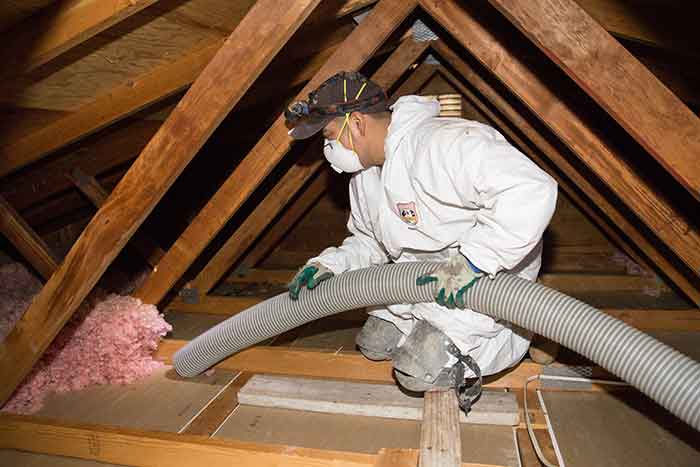As homeowners, we often prioritize regular maintenance and upgrades for visible aspects of our homes while overlooking the critical role played by insulation. However, outdated or deteriorating insulation can have significant implications for comfort, energy efficiency, and indoor air quality. In this guide, we’ll explore the importance of removing old insulation and replacing it with new, highlighting the benefits and considerations for homeowners.
1. Deterioration Over Time
Old insulation, particularly in homes built several decades ago, is susceptible to wear and tear. Materials such as fiberglass and cellulose, can degrade over time due to factors like moisture intrusion, pest infestation, settling, or simply the natural aging process. As insulation loses its effectiveness, it fails to provide adequate thermal resistance, leading to energy loss and reduced comfort levels within the home.
2. Health Concerns
Beyond its thermal properties, old insulation may pose health risks to occupants due to mold, mildew, or pest infestation. Moisture buildup can create an ideal environment for mold growth, which not only compromises indoor air quality but also poses respiratory health hazards. Similarly, old insulation may harbor pests such as rodents or insects, exacerbating allergy symptoms and potentially causing structural damage.
3. Energy Inefficiency
Outdated insulation is a major culprit behind energy inefficiency in homes. As it loses its ability to resist heat transfer, more energy is required to maintain comfortable indoor temperatures, leading to higher utility bills. By replacing old insulation with newer, more efficient materials, homeowners can significantly reduce energy consumption and enjoy long-term savings on heating and cooling costs.
4. Structural Integrity
In addition to its thermal properties, insulation plays a crucial role in preserving the structural integrity of a home. Moisture infiltration can lead to wood rot, corrosion of metal components, and even compromise the stability of the building’s framework. By removing old insulation and addressing any underlying issues, homeowners can safeguard their property against costly repairs and ensure its longevity.
5. Improved Comfort and Air Quality
Upgrading to new insulation not only enhances energy efficiency but also improves overall comfort and indoor air quality. Modern insulation materials are designed to provide better thermal performance while minimizing the risk of mold or pest infestation. By creating a healthier living environment with consistent temperatures and cleaner air, homeowners can enjoy a more comfortable and enjoyable living space.
6. Environmental Considerations
From an environmental standpoint, replacing old insulation with newer, eco-friendly materials contributes to sustainability efforts. Many modern insulation options are made from recycled or renewable materials and have minimal environmental impact during production and disposal. By reducing energy consumption and promoting a healthier indoor environment, homeowners can make a positive impact on both their wallets and the planet.
Conclusion: Investing in a Healthier, More Efficient Home
In conclusion, the importance of removing old insulation and replacing it with new cannot be overstated. From deteriorating thermal performance and health concerns to increased energy costs and structural risks, outdated insulation poses numerous challenges for homeowners. By investing in modern insulation solutions, homeowners can enhance comfort, improve energy efficiency, and ensure the long-term health and integrity of their homes. Don’t wait until issues arise—take proactive steps to upgrade your insulation and enjoy the benefits of a healthier, more efficient home today.

